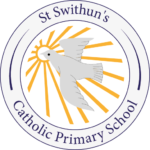Pupil Premium
St Swithun’s Catholic Primary School
The Pupil Premium was introduced in April 2011 to address the inequalities between disadvantaged pupils and their peers. Schools decide how to use the Premium with the aim of improving educational attainment of children from less privileged backgrounds. From September 2012 schools are obliged to publish online information about how they have used the Premium. This ensures that parents and others are fully aware of the attainment of pupils covered by the Premium and the extra support they receive.
The Pupil Premium is allocated to the school and is generated by children:
-
- who are currently known to be eligible for Free School Meals (FSM) or have been registered for FSM at any point in the last six years
- who are or have been ‘looked after’ continuously by a Local Authority for more than 6 months;
- who are from service families.
We believe that every child should be encouraged and supported to achieve the best standards of which he or she is capable, and through the careful spending of our pupil premium funding and additional support put in place by the Governors, we can provide the very best learning possible.
How will we decide how to spend the PPG?
We will, as far as possible, make evidence based decisions. This will be from institutions such as the Education Endowment Fund research, individual programmes such as “Better Reading” and from the outcomes of our own work. We will measure the impact as far as possible of each intervention and review regularly. Some areas are difficult to quantify such as supporting children to go on a school trip or the purchase of a PE kit yet that does not mean we will not do these things and this will be down to the professional judgement of the school. Funding will be used for universal support. This may be, for instance, the professional development of staff though a project such as “Destination Reader” or for coaching. The purpose behind this is that if we increase the skills of staff all pupils including those eligible for PPG will get the benefit. When working with groups there may well be children who are not eligible for PPG within these. This may be because there aren’t enough pupils at a suitable stage for the intervention and that this is the most efficient use of the funding.
Impact of Pupil Premium and Strategy for Use of Grant
If you would like to view our “Impact of Pupil Premium and Strategy for Use of Grant, please click on the link/s below:
Pupil Premium Strategy 2023 – 2025
Impact of Pupil Premium 2021-22 and Strategy for use of the Grant 2022-23
Impact of Pupil Premium 2020-21 and Strategy for use of the Grant 2021-22
Impact of Pupil Premium 2019-20 and Strategy for use of the Grant 2020-21
